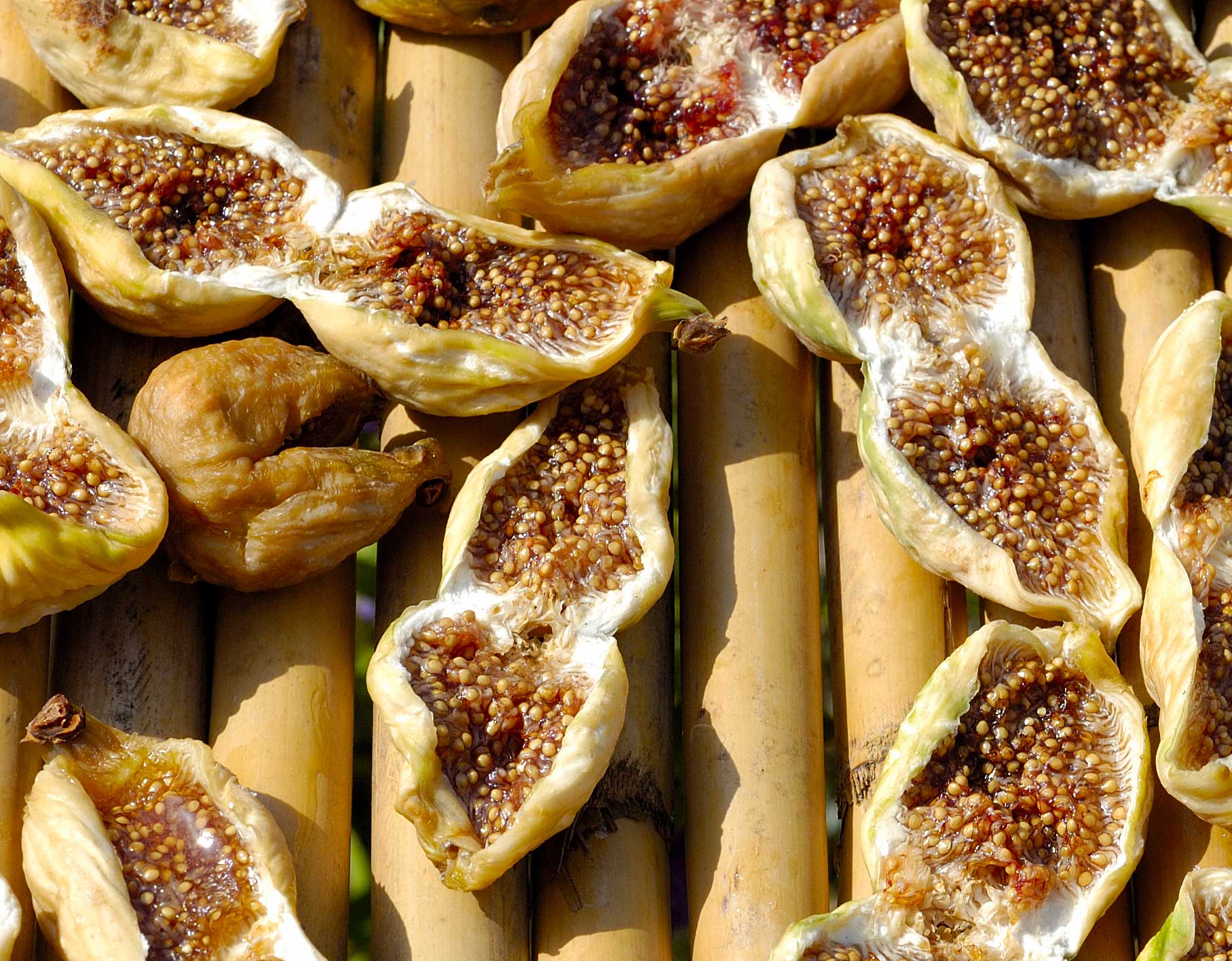Paleobotaical findings in the village of the Gran Carro (X-IX century B.C.) close Bolsena lake, Blera, Tarquinia and Volterra confirm that the Etruscans cultivated figs (Ficus carica) and made dried figs. In Volterra’s sanctuary, in the acropolis, fig seeds found in the offerings have made scholars hypothesize that the divinity that the structure was dedicated to may have had many characteristics in common with Demetra in the Greek world because figs were one of her favorite offerings. Pausania wrote, in fact, that it was Demetra offered this “late summer fruit that humans call figs” to Ki ng Fitalo to thank him for his hospitality after she had searched for her daughter on the Eleusi plain.
ng Fitalo to thank him for his hospitality after she had searched for her daughter on the Eleusi plain.
Etruscans must have also known and consumed other fruits:
the pear, which has been found in the paleobotanic remains in Blera;
the cherry, introduced from Greece. A very red and flavourful variety was imported around the I century B.C. by a certain Apronius, who originally came from Perugia;
the pomegranate, which originally comes from the south west regions of Asia and was probably introduced in Etruria by way of Carthage, which gave it its name Punica granatum. The oldest finding come from Tomb A in Casale Marittimo, dating to the antique orientalizing period (720-670 B.C.) The pomegranate was a symbol of prosperity and fertility, but it was also tied to the world of the afterlife: Persephone, the daughter of Zeus and Demetra, was condemned to spending a third of every year with Hades, god of the underworld.
the hazelnut, relatively common in archaeological finds (for example, it has been found in the previously cited Tomb A in Casale Marittimo, Tarquinia and Blera), very nourishing and easily conserved;
the melone, which is believed to come from the Orient. Seeds classified as pertinent to the melon or the cucumber have been found in Tarquinia.
Quaderno dell’archeologia didattica, Maria Chiara Bettini, editor.
Bibliographic Notes
A.M. Esposito, Principi guerrieri. La necropoli etrusca di Casale Marittimo, Milano 1999.
- Giulierini, I piaceri della tavola: il mondo femminile e la cucina, in Larthia. La vita di una donna al tempo degli Etruschi. Atti del convegno, Firenze 2008, p. 27 e ss.
- Saragosa, Alberi: etimologia, storia, miti e leggende, Avellino





